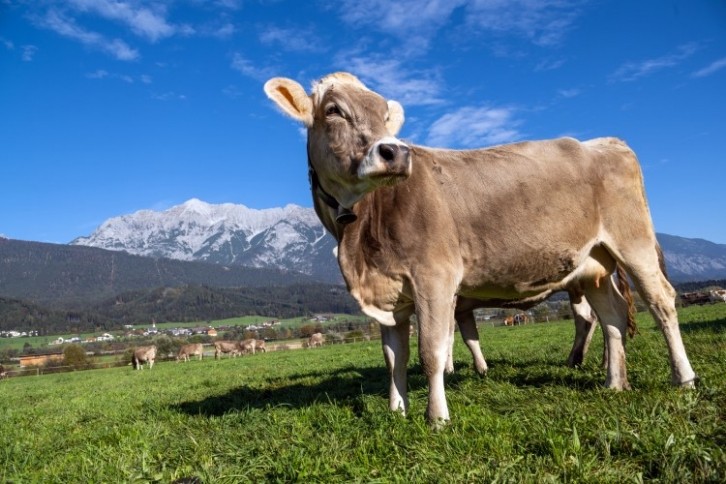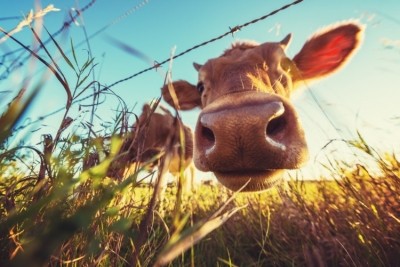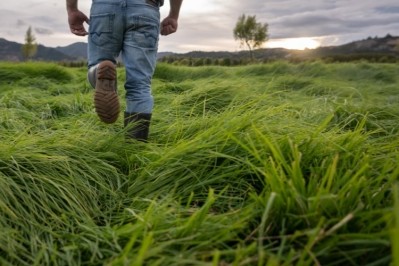Study sheds light on how heat stress affects cow’s milk

Does heat stress ‘discriminate’ in how it affects dairy cows? According to new research, Holsteins and Brown Swiss react differently, down to the microbiota of their milk.
The study, published in the Journal of Dairy Science (see Sources below for more information) investigates for the first time the effects of heat stress on the milk microbiota of two popular breeds of dairy cows.
The research team from Italy also compared how exposure to high temperatures affected production parameters such as milk yield, fat, protein and casein content, and tried to link the effects of heat stress to changes in the milk microbiota.
Microbiota refers to the group of bacteria that’s present in bovine milk – for example, Lactococcus and Streptococcus. According to the study, there’s a lack of academic research into the impact of heat stress on cow’s milk’s microbiota or how it changes during a heatwave in different breeds of dairy cows.
To plug these research gaps, academics from University of Milan, University of Bari and the Institute of Agricultural Biology and Biotechnology at the National Research Council of Italy carried out a trial in the summer of 2022 involving 20 Holstein and Brown Swiss cows each, all reared at the same commercial farm in Southern Italy.
For the experiment, the researchers induced a heat wave by switching off the cooling system in the dairy barn for 4 days and then re-activating it, measuring temperature and humidity levels via data loggers placed at the height of the cows’ heads.
Milk samples were collected during morning and afternoon milking, including for the purpose of studying the effects of heat stress on the milk microbiota during heat stress and at more comfortable thermal conditions.
How did heat stress affect milk?
Hot temperatures affected Holstein cows greatly in milk composition terms than their Brown Swiss counterparts. For example, Holsteins’ recorded lower values of protein and casein as well as milk yield, fat-corrected milk and energy-corrected milk.
In Brown Swiss cows, lactose levels were slightly elevated during heat stress, while they remained mostly unchanged in Holsteins. In both breeds, saturated fatty acids decreased during the experimentally-induced hot spell, while monosaturated and unsaturated fatty acids remained relatively unchanged.
In terms of the effects of heat stress on the milk microbiome, the researchers observed ‘significant’ changes in the milk of Brown Swiss cows but not as much in Holsteins.
The milk microbiota of Brown Swiss was richer under heat stress than under normal thermal conditions.
But when the two breeds were compared under normal thermal conditions, it was the Hoslteins’ milk microbiota that was richer.
The study also found that heat stress induced changes in the abundance of more than 100 types of bacteria across the two breeds, such as Enterococcus, Lactococcus and Steptococcus. “Interestingly, Streptococcus, Enterococcus, Chryseobacterium, and Lactococcus increased in both species, whereas the behavior of Prevotella 9…decreases in Holstein and increases in Brown Swiss,” the researchers wrote in the results part of their study.
“Remarkably, the number of OTUs [operational taxonomic units] at the genus level that changes in Holstein…was higher than those in Brown Swiss,” the analysis continued.
“Moreover, comparing the two breeds, in Holstein, most of the changes related to [heat stress] induced a decrease in the OTU abundance. In contrast, in Brown Swiss, most of the changes at the OTU level increased in abundance.”
This is the first academic study to associate the abundance of closely-related genomes of bacteria found in milk with heat stress, the authors said.
The research also suggests that some species of Streptococcus bacteria thrive in hot temperatures, potentially increasing the risk of mastitis.
At the same time, an increase of the Lactococcus bacteria, which also occurred during the heat stress experiment, leads to increased fermentation and milk spoilage.
“In conclusion, the present report confirms and extends previous studies by showing that Brown Swiss cows regulate their body temperature better than the Holstein breed,” the researchers wrote.
“Consistently, some productive parameters, like protein content and milk coagulation properties, were less affected in Brown Swiss than in Holstein.
“Changes in uncultured milk microbiota also confirm the relative thermal tolerance to HS of the Brown Swiss as compared with Holstein, the changes of which were more evident in Holstein as compared with Brown Swiss.”
The team is carrying out additional research to find out how mammary glands adapt to heat stress and how this affects milk production and quality.
Sources:
Heat stress has divergent effects on the milk microbiota of Holstein and Brown Swiss cows
Authors: Ceciliani F, Maggiolino A, Biscarini F, Dadi Y, De Matos L, Cremonesi P, Landi V, De Palo P, Lecchi C.
Published: J Dairy Sci. 2024 Jun 20:S0022-0302(24)00957-3.
DOI: 10.3168/jds.2024-24976











